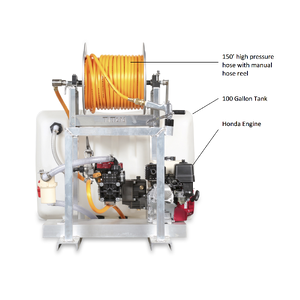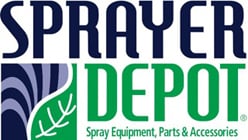 Sprayers are a unique piece of equipment that span uses across multiple industries. No matter what your intended use, the components and parts that make up a sprayer remain the same, with slight tweaks here and there for each industry’s use. Here we’ll take a look at what makes up a sprayer.
Sprayers are a unique piece of equipment that span uses across multiple industries. No matter what your intended use, the components and parts that make up a sprayer remain the same, with slight tweaks here and there for each industry’s use. Here we’ll take a look at what makes up a sprayer.
First, when we’re talking sprayers, we throw a lot of numbers out there in reference to a given model number. P5, D30 and XL are likely some common shorthand that you’ve heard, but what does it all really mean? Let’s take a look at the anatomy of a sprayer by analyzing the parts that make up a model number with a little help from Brandon Grossman, Sales Manager at Sprayer Depot.
Sprayer model numbers are jam-packed with information about the product itself. If you know enough about the various pumps and parts of a sprayer, you can probably recite every last detail of the features included in a given sprayer just from the model number alone. Let’s use Kings Sprayers as an example and I’ll walk you through how it works.
Model numbers consist of the frame, tank size, pump and engine as well as applicable customization options for a given unit. You might be thinking that my previous statement is crazy … the one about knowing all the features of a given model just from the number, but in all seriousness it’s not as complicated as it may seem at first.
So let’s start from the beginning. All Kings Sprayers model numbers start with the letter ‘K’ as in Kings Sprayers, but you probably already guessed that.
There are really four types of sprayers from this manufacturer: skid sprayers are noted by the letters KS, KT notes 2-wheel frames, 4-wheel frames are noted with K4C, and 3-point hitch frames start with K3PTH.
From there the model number will tell you the tank size. So a skid sprayer from Kings Sprayers with a 200-gallon tank would start with ‘KS200.’ Common tank sizes are 50, 100, 150 and 200-gallon capacity, but go up from there and vary in capacity by the type.
Next in the order of letters and numbers in a model number is the pump/engine combination. This one isn’t as easy to assume, so here it goes:
One exception to this rule are the 3-point hitch sprayers from Kings Sprayers, which are all equipped with a Hypro 7560C Roller Pump, so you won’t see that in the model number.
Rounding out the model number combination are the add-ons or extra customizations for a given sprayer. There are really three you need to know:
Ultimately the model number looks a little something like this:
[brand][type of sprayer][tank size][pump/engine combination][extra add-ons]
So a KS100P7027 would refer to a Kings Sprayer model with the following features: skid sprayer, 100-gallon tank, GX160 5.5 HP Honda engine and Udor KAPPA43GR diaphragm pump with a manual hose reel. Got it? Good.
We love hearing your ideas. Anything you’d like us to cover here on our blog? Leave a comment below or send us a note on Facebook or Twitter. Until next time, happy spraying.

.png?width=280&name=SameDayShippingGuarantee-New%20(1).png)



